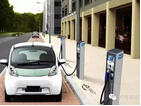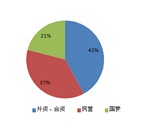At the Ministry of Communications held a regular press conference in June, Mao Jian said that by 2020, the transportation industry must achieve the established goal of “a complete completion of the transportation pollution prevention and combat mission”. To promote the use of new energy vehicles, by the end of 2020, buses in the built-up areas of municipalities directly under the Central Government, capital cities, and cities planned for individual cities in key regions will all be replaced with new energy vehicles.
According to the spirit and specific requirements of the National Eco-Environment Protection Conference held in May this year, the Ministry of Communications will strengthen the upgrading of vehicle structures and promote the use of new energy vehicles. Work vehicles such as ports, airports and railway freight yards in key regions will be replaced with new energy or clean energy vehicles. The promotion and application of new energy and clean energy is one of the important measures for green transportation, which is conducive to optimizing the structure of transportation equipment, improving the efficiency of transportation equipment and the overall level of energy efficiency. Cooperate with related departments to carry out the construction of charging facilities in the highway service area and airport yard. By the end of 2020, the number of new energy vehicles in urban public transportation, taxis, and urban distribution will reach 600,000.

China's promotion of new energy vehicles is increasing. The public statistics show that at present, about 250 million people choose bus travel every day, and the total number of new energy vehicles in the industry has exceeded 300,000. According to the data released by Beijing Bus Group, the main body of Beijing ground public transport, from 2015 to 2017, the proportion of Beijing Public Transport Group's clean energy and new energy buses has increased from 44.95% in 2015 to 60.7%. 15.75%. Nevertheless, it is less than two years away from 2020. The promotion target of 600,000 new energy vehicles still appears to be more arduous.
In response, the Ministry of Communications is also actively implementing initiatives. At the experience meeting on the high-quality bus high-quality line held on May 27th, the relevant person in charge of the Ministry of Communications said that it will actively coordinate the financial department and rationally coordinate the adjusted rural passenger transport and taxi fuel subsidy funds to support the public. Traffic development and promotion and application of new energy vehicles will promote new and updated buses to prioritize new energy vehicles.
















 RCCN WeChat QrCode
RCCN WeChat QrCode Mobile WebSite
Mobile WebSite







